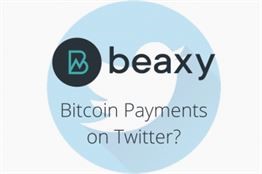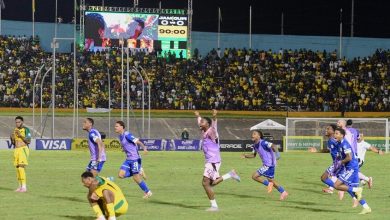Mutual Information between Order Book Layers
Content
In eight different time periods of a trading day, bid/ask side imbalance ratio of orders’ arrival (column 2/4) and cancelling ratio of orders (column 3/5). If it buys all available shares at the lowest ask, the next ask above will become the new lowest ask, and that is where additional shares will be bought. The total columns are the cumulative amounts of the specific security sold from different prices. The Order Book shows how many limit orders are active at each price level at the current moment. The greater the market depth, the smaller the market impact of a large market order, and thus less likely the chance of the price being manipulated.
How do you calculate bid and ask?
In the bid-ask formula, we find out the difference between the price the sellers ask and the price of the buyer's bid. We can see from the bid-ask example of Reliance Industries. For a buy quantity of 47, the bid price is 925.25, whereas the asking price is 925.30. Bid-Ask = 925.30 – 925.25 = 0.05.
If the price reaches this level, the trader’s order is automatically executed. StormGain will add a Recent Trades section that displays real-time executed orders in future updates. StormGain’s updated UI with an Order Book that includes real-time Bid and Ask ordersIf the asset is unpopular, it isn’t easy to execute orders. Neither the seller nor the buyer wants to give ground on the price. The spread between the Bid and Ask prices increases, and liquidity decreases. The Spread also determines an asset’s liquidity, i.e., the ability to sell it without quickly losing value. The narrower the Spread is, the more liquid the instrument is, and the more attractive it is for trading. To read more about the importance of liquidity in trading, please read our article on the Top 5 traded cryptocurrencies. The Bid is the buy price or maximum price that buyers on the exchange are willing to pay for an asset.The size of the Bid and Ask prices is highly dependent on the law of supply and demand. The higher the demand for an asset is, the higher the Bid price is.
Example of an Order Book
This space is located at the bottom of our application, as shown in the following screenshot. In this method, a customer queries a finite set of participant market makers who quote a bid/offer (“a market”) to the customer. Futures and futures options trading involves substantial risk and is not suitable for all investors. Please read theRisk Disclosure Statementprior to trading futures products.
Bookworm: Seat backs upright, tray tables locked, get ‘Fly Girl.’ Buckle up! – Marco News
Bookworm: Seat backs upright, tray tables locked, get ‘Fly Girl.’ Buckle up!.
Posted: Wed, 20 Jul 2022 09:11:31 GMT [source]
When the price hits the limit, the order gets executed automatically. The order book is a list of current buy and sell orders used by an exchange to fill orders on a specific market. The order book consists of both orders to buy or sell at a fixed price (“limit” orders) and orders to buy or sell at the best available price (“market” orders). But since market orders only appear in the order book momentarily, they aren’t shown in the publicly viewable order book. A depth chart is a visual representation of the demand and supply at different price levels. The bid/ask depth available for markets only shows the bid and ask depth of limit orders on the order book.
Latest Articles
It is displayed as a vertical line within the liquidity bar at the relevant price level. Its position within the bar is defined by the ratio of the order size to the total liquidity size at this level. The size of the order must be above the threshold percentage of the total liquidity at the relevant price level. If activated, each price level on the ask side displays the liquidity available at this level plus the liquidity available at all the levels below it all the way down to the best ask. Similarly, on the bid side, each level displays the liquidity available at this level plus the liquidity available on all levels above it up to the best bid.

Under competitive conditions, the bid–ask spread measures the cost of making transactions without delay. The difference in price paid by an urgent buyer and received by an urgent seller is the liquidity cost. Since brokerage commissions do not vary with the time taken to complete a transaction, differences in bid–ask spread indicate differences in the liquidity cost. It is important for traders to realize the dynamic nature of an order book. That is, when the market is open, buy and sell orders would keep arriving at the order book. Market orders, which demand liquidity, would be matched against existing limit orders on the book.
Iceberg order is the conditional request made to the broker to sell or buy a larger quantity of the stock, but in smaller predefined quantity. By local movement, the author means that the conditional movement of the future price (e.g best ask price movement) depends, locally, on the current LOB state. The following book has an iceberg order at the top of the book with a full quantity of 1,000 but a display quantity of 100. The total order quantity is shown as normal, while the visible quantity of the order is shown in brackets. Note how as we move outwards in the chart in price, each side gains more cumulative liquidity, thereby increasing the height of the line. This instruction indicates that if the order cannot be fully filled in the current book, the order will be canceled. Essentially either you fill the entire order, or none of it is filled. To place a new order you submit a new order instruction to the exchange. Depending on the type of order you are sending you might need to provide different parameters.
A limit order is an order placed to either buy below the market or sell above the market at a certain… The customer is prohibited from stepping inside the bid/ask spread and trying to reduce their execution fees. The use of a CLOB is common for highly standardized securities and small trade sizes. The CLOB is by definition fully transparent, real-time, anonymous, and low cost in execution. The principle of price/time priority refers to how orders are prioritized for execution. Determine significant support and resistance levels with the help of pivot points.
As soon as an order for the required amount of an asset finds matching Ask and Bid prices, the transaction executes. Our results show that as we dive deeper into the limit order book, the mutual information between the layers increases. The stability of the findings across every transaction as well as multiple transactions further validates our findings. Indeed, this method was a good fit for our case, since our analysis showed that differences in prices tend to have some rare outliers that are difficult to measure. These snapshots were created for the bid and ask sides separately, yielding a snapshot of the order book sorted by price points, or layers. In order to validate the consistency of the observed patterns, results were compared to a diluted time series in which every other snapshot were discarded. Statistical summary of raw orders and transactions data prior to grouping into layers. These are just a few examples of how a continuous book might help traders develop anorder book tradingstrategy. There are even more options, such as analyzing recent chart patterns to determine the market behavior. Traders can spot it simply with the continuous book and question the validity and motives of such a trade.
More specifically, we extract labels based on short-term and long-term, event based, relative change for the next 1, 2, 3, 5 and 10 events for our representations dataset. One complication that arises from this is that the news cycle is 24 hours, and overnight there might be important information released about a stock. The price at which the trading day starts is called the open price while the price at which the market ends at is called the https://www.beaxy.com/exchange/dash-btc/ close price. Because of the overnight time difference, the previous days close price might not reflect what the participants feel that the new open price should be. Both the impact bid price and impact ask price are listed for different quantities. These are calculated by looking at the cumulative quantity as you go deeper in the book, and seeing what best bid/ask price would be left if a certain quantity were to be removed from the book.
Level 2 L
The quantity of orders being bid on or offered at each price point, also known as market depth, is listed in an order book. They provide vital trading information, which increases market transparency. Depth and liquidity of the order book play a crucial role in price discovery. Read more about eth value calculator here. Normally, an order book comes with a table of numbers consisting of prices and total amounts from two sides. To better represent the relationship between buyers and sellers, most of the order books come with a visual demonstration as well. In this way, the reader can quickly achieve an overall understanding of market demand and supply. In addition, you can also gauge whether the buy side or sell side has stronger momentum by reading the order book. If the order quantity on the buy side is significantly larger than that of the sell side, especially on the best bid/ask price level, it suggests stronger momentum from the buy side, and that the BTC price is likely to rise. Similarly, if the order quantity on the sell side is significantly larger, it suggests stronger momentum from the sell side.
Can ask price be lower than bid price?
The term ‘bid’ refers to the highest price a buyer will pay to buy a specified number of shares of a stock at any given time. The term ‘ask’ refers to the lowest price at which a seller will sell the stock. The bid price will almost always be lower than the ask or “offer,” price.



